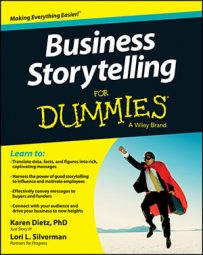You have many opportunities to use stories in marketing your business. Figuring out what to share and where to share it are tactical feats. But tactics will only take you so far. Better to first think strategically and then build a story strategy that includes these tactics. Base the strategy on these four interconnected I’s: immersion, interactivity, integration, and impact.
Immersion: Through marketing stories, you’re creating both experiences and entertainment. When hearing or reading a story, listeners become immersed in the story world being shared. What steps are you taking to invite people into your organization’s stories? In return, what are you doing to become immersed in the stories they share?
Interactivity: Create situations where people can both immerse themselves in the story and interact with it to affect its outcome.
How might this happen? They can write their own ending and share it (or choose a different ending), share a story from a character’s perspective, create different plots for how the story should go, or create a parody of the story to share. You can also offer interactivity through additional links, videos, maps, and the like to relay different facets of the story.
Integration: Seamlessly connect stories across all marketing platforms. Don’t replicate stories in different media; share different parts of the story in different media using a unified original story line. That means you need to decide on the messages, values, and qualities that need to cross all media channels.
For example: Tell the main story of a product or service in one media, stories from customers elsewhere, and employee back stories about the process in another channel.
Here’s another example using the Cinderella fairy tale. Tell the popular tale on one channel. Have the Fairy Godmother tell her side of the story on another channel. On a third channel, Prince Charming delivers his take on the story.
Link all stories together online so they feed each other. Are you thinking of your marketing stories in this way? What theme or themes can you use to link them together and create integration?
Impact: What kinds of emotional, social, and psychological impacts are your organization’s stories having on people? Using quantitative and qualitative measuring tools is important here. Are marketing stories offering action steps for these folks to take based on what they learn by engaging with these stories? Always remember that the degree of impact connects back to the strategies and storytelling techniques being used to accomplish immersion, interactivity, and integration.

